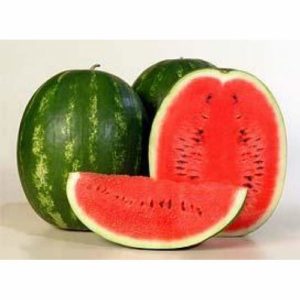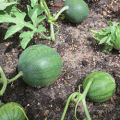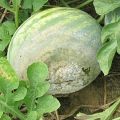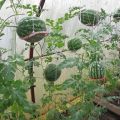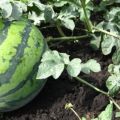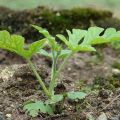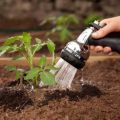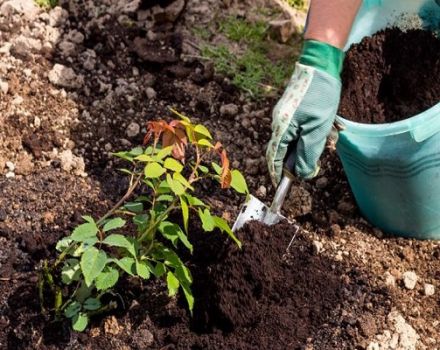How and how to properly feed watermelons in the open field during flowering and fruiting
Many gardeners are engaged in the cultivation of melons and gourds. However, not all of them manage to grow juicy fruits with good taste. In order for the harvest to be of high quality, it is necessary to regularly feed watermelons in the open field. mineral and organic fertilizers.
Why you need to feed watermelons
Some gardeners who are going to grow melons and gourds do not know why they are fed. Most often, fertilizers are used if the soil lacks nutrients. For example, for growing watermelons in the southern regions, feeding is not necessary, since fertile soils prevail on this territory. Gardeners recommend feeding watermelon bushes to residents of the eastern and central regions. In these areas, it is contraindicated to grow melons and gourds without regular fertilizing of the soil, since due to a lack of micronutrients, the fruits will grow slowly.
Fertilizing mixtures are added to the soil when the first signs of nitrogen deficiency appear. These include slow growth of seedlings, poor development of inflorescences, thin shoots and the appearance of a white bloom on the surface of the leaves. If you add a solution that contains nitrogen to the ground, the bushes will begin to grow much faster. However, it is necessary to use such dressings very carefully, since sometimes, due to their excess, seedlings begin to grow worse. Therefore, melons and gourds are fertilized in moderation so as not to oversaturate the soil with nutrients.
Feeding methods
There are two main methods by which plants are fertilized:
- Root. When using this method, all fertilizing solutions are added to the soil so that they can be absorbed by the roots.
- Foliar. A less common method in which all fertilizers are injected directly into the stem or leaves.
It is recommended that you familiarize yourself with each of the considered methods in more detail.
Foliar
A characteristic feature of this method is that when it is used, you have to fertilize the bushes by introducing nutrients through the leaves and stems. This promotes faster penetration of the components into plants. It is necessary to fertilize plants by foliar method very carefully, since the introduction of a large amount of solution negatively affects the development of seedlings.
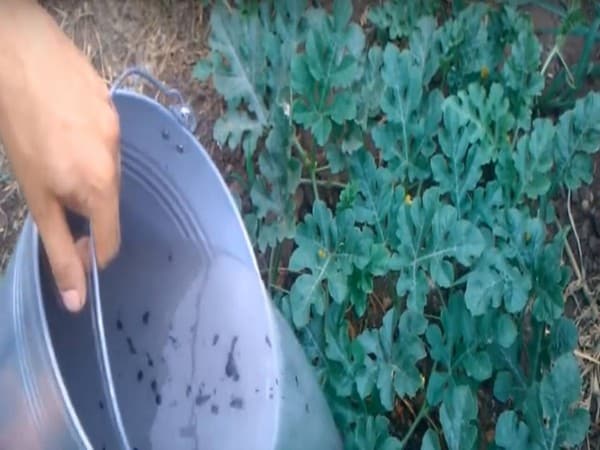
Using the foliar method, all leaves are carefully sprayed with a fertilizing solution, which may include organic or mineral substances. Spraying is carried out only in the evening or sutra when there is no sun.
Root
To improve the development of watermelon seedlings, gardeners fertilize them with the root method. For this, liquid solutions from manure and other organic components are used. Each bush is poured under the root with a fertilizing solution.
At least five liters of liquid are consumed per square meter of a plot with planted watermelons.
It is better to fertilize the soil before watering the seedlings or heavy rain, as organic matter is absorbed faster in moist soil.
Types of organic dressings
Many vegetable growers prefer to fertilize melons at home with organic matter. To do this, use animals, plant dressings and other folk remedies, from which a nutrient solution can be prepared.
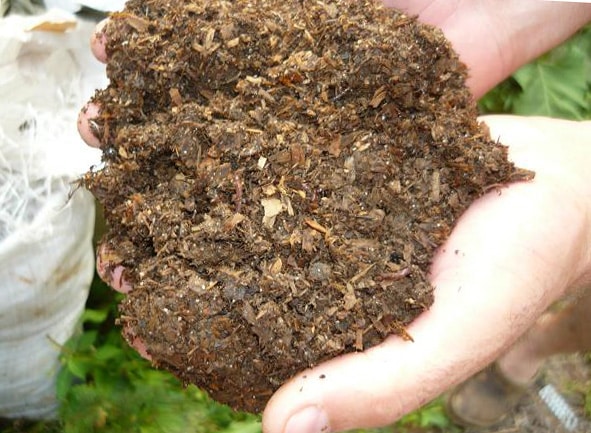
Vegetable
There are several plant components that can be used to feed grown watermelons:
- Humus. When growing melons and gourds, seedlings are often fertilized with humus, which is prepared from soil and animal debris. To prepare such a fertilizer, it is recommended to use manure or bird droppings.
- Ash. It is difficult to find a gardener who has never used wood ash. To create a nutrient mixture, the remnants of burnt weeds, leaves, wood and straw are mixed. Regular application of ash will fill the soil with boron, calcium, phosphorus and sulfur.
- Biohumus. Some gardeners use vermicompost, for the preparation of which the rotten leaf mixture is mixed with yeast, soil and worms. If you periodically fertilize watermelons with biohumus, then the fruits of the plant will become larger and tastier.
Animals
When using organic matter, not only components of plant origin are added to the soil, but also of animal origin. These include:
- Litter. Almost every gardener, when growing melons and gourds, uses chicken manure. It contains nutrients such as potassium, phosphorus and magnesium. For fertilization, use only a weakly concentrated solution mixed with water.
- Mullein. To feed watermelons, you can use mullein, which is very similar in composition to urea. It contains a lot of potassium, nitrogen and phosphorus, which improve the growth of seedlings. The advantages of the mullein include the fact that it is environmentally friendly, therefore, even in large quantities, it does not harm watermelons.
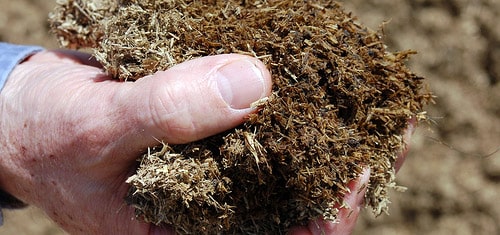
Mineral fertilizers
Sometimes, to increase the yield of melons and gourds, it is not enough to use only organic matter, therefore they also use mineral dressings with iodine and other microelements. Before feeding a watermelon, you need to familiarize yourself with the classification of such fertilizers.
Phosphate
To quickly improve the growth of watermelon seedlings, soluble phosphates are used, which include:
- Ammophos. This granular component is half phosphorus. The rest of the ammophos contains potassium, sulfur and nitrogen. If the component is used correctly, the immunity to diseases will increase in watermelons, the yield will increase and the taste of berries will improve.
- Superphosphate. Superphosphate is a common mineral supplement. Its main advantage is called a high degree of dissolution in water.
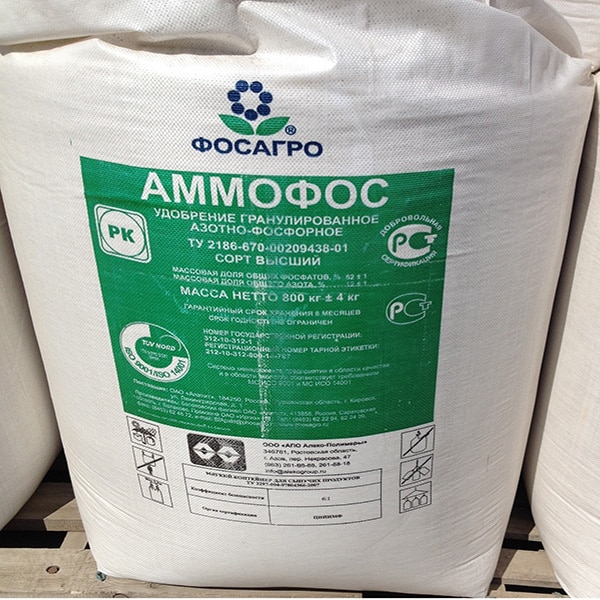
Nitrogen
Common nitrogen fertilizers include:
- Urea. This feeding is used to accelerate photosynthesis and fruit growth.It is not recommended to fertilize plants with urea too often, as this will reduce the number of flowers and worsen the yield.
- Saltpeter. The substance is one third of nitrogen, therefore it is included in the group of nitrogen-containing components. Saltpeter should not be added to the soil in large quantities, so that nitrates do not appear in the watermelon fruits, which can harm human health.
Potash
Potassium has a positive effect on the growth of melons and gourds, therefore it is necessary to regularly water the soil with potassium solutions. You can feed watermelon bushes with potassium chloride, which improves the protective properties of seedlings and helps them cope with sudden weather changes and diseases.
Differences in feeding in the open field and in the greenhouse
Before growing a watermelon, it is recommended that you familiarize yourself with the main differences between their fertilization in a greenhouse and a vegetable garden. Growing watermelon bushes in greenhouse conditions, the soil is often fertilized with mineral components, which include phosphorus, potassium and nitrogen. To prepare a working mixture, 20 grams of the substance are added to 10-15 liters of water.
The resulting liquid is enough to water 4-5 bushes. When the first flowers appear on the seedlings, a superphosphate mixture is added to the ground. To prepare it, add 50 grams of superphosphate to a ten-liter container with water. After that, the liquid is sprayed on the area with watermelons.
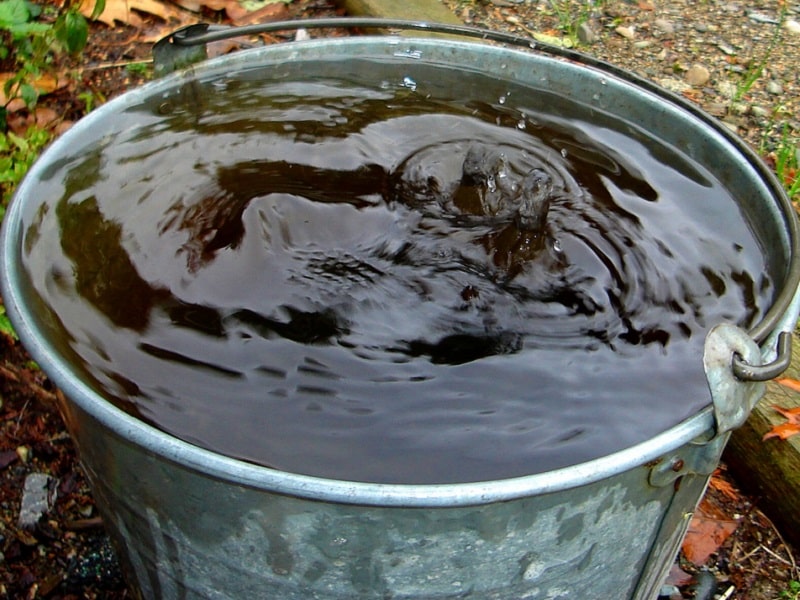
The care of seedlings that are grown outdoors consists in the regular addition of organic matter. Solutions made from foliage, herbs and manure are periodically added to the ground. They not only enrich the soil with useful microelements, but also cleanse it of bacteria and hazardous substances. Also, watermelons in gardens are periodically fertilized with wood ash to improve the taste of the fruit.
Watermelon feeding scheme
There are many techniques that help evenly distribute feeding throughout the entire cultivation of watermelons. However, the most effective is the scheme in which plants are fertilized at each stage of their development.
When sowing seeds
The first feeding is carried out during the planting of watermelon seeds. Before applying top dressing, before planting the seed, determine the type of soil and its acidity level. Areas with sandy soil are fertilized with a solution of humus. Calcareous soils are fertilized with mineral trace elements.

Fertilizer when planting seedlings
Some gardeners grow seedlings in advance, which are transplanted into the garden in the future. Before planting young seedlings, the entire area is sprayed with Fitosporin, which cleans the soil from viruses and other pathogens. Then the ground is sprinkled with mustard, oats and other green manures, which promote the development of roots and green mass of watermelons.
During flowering
Before flowering melons, it is recommended to enrich the soil with potassium, which improves the formation of flowers. For this, the area is treated with a solution prepared from Nutrivant. To create a mixture in 20 liters of water add 200-300 grams of the drug. There is enough liquid to fertilize three square meters of watermelon plot.

At the beginning of fruiting
During the period of the appearance of the first ovaries, the bushes need such a component as boron. It is essential for cell development and ripening of watermelon berries. In plants that lack boron, the leaves turn yellow and small stripes appear on the fruits.To saturate the soil with a component, you will have to process the bushes with Megafol and Plantafol for two weeks.
Fertilizer for fetal growth
After the formation of ovaries on the plants, the stage of growth of watermelon fruits begins. It is recommended that you familiarize yourself with the features of fertilizing watermelons during this period in order to increase yields.
Every ten days, the bushes are watered with a solution of Unifloroma, which contains components to accelerate the growth of berries.
To create a mixture for watering seedlings, add 100 grams of the drug to ten liters of warm water. After that, the mixture is stirred and the soil is fertilized with it. To make the harvest juicier and tastier, the bushes are treated with a fertilizing mixture prepared from Terraflex. To create a working fluid, add 50 grams of the drug to 20 liters of water.
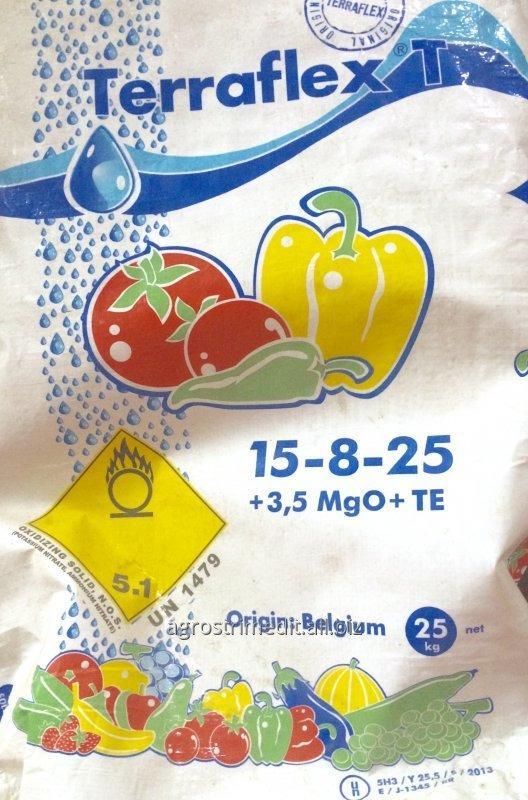
How to determine excess and lack of feeding
Deficiency or overabundance of nutrients in the soil is quite simple to determine. To do this, it is enough to monitor the condition of watermelon seedlings. If the bushes do not grow well, and weak shoots are formed on them, then they do not have enough nitrogen. Also, the lack of this substance is indicated by small yellow spots that have appeared on the surface of the leaves.
There are times when the bushes wither for a long time and grow little green mass. Such signs indicate a lack of potassium supplements, which are needed for watermelons. If there is too much potassium in the soil, lateral shoots are imposed on the plants, due to which the growth of berries deteriorates.
The death of flowers and ovaries is observed with calcium deficiency. Also, the lack of a component leads to the formation of small fruits and underdeveloped inflorescences.
Conclusion
When growing melons and gourds, it is imperative to apply fertilizers. Therefore, it is recommended that you familiarize yourself in advance with the main methods of feeding, their varieties and features of feeding watermelons with various mineral and organic fertilizers.
